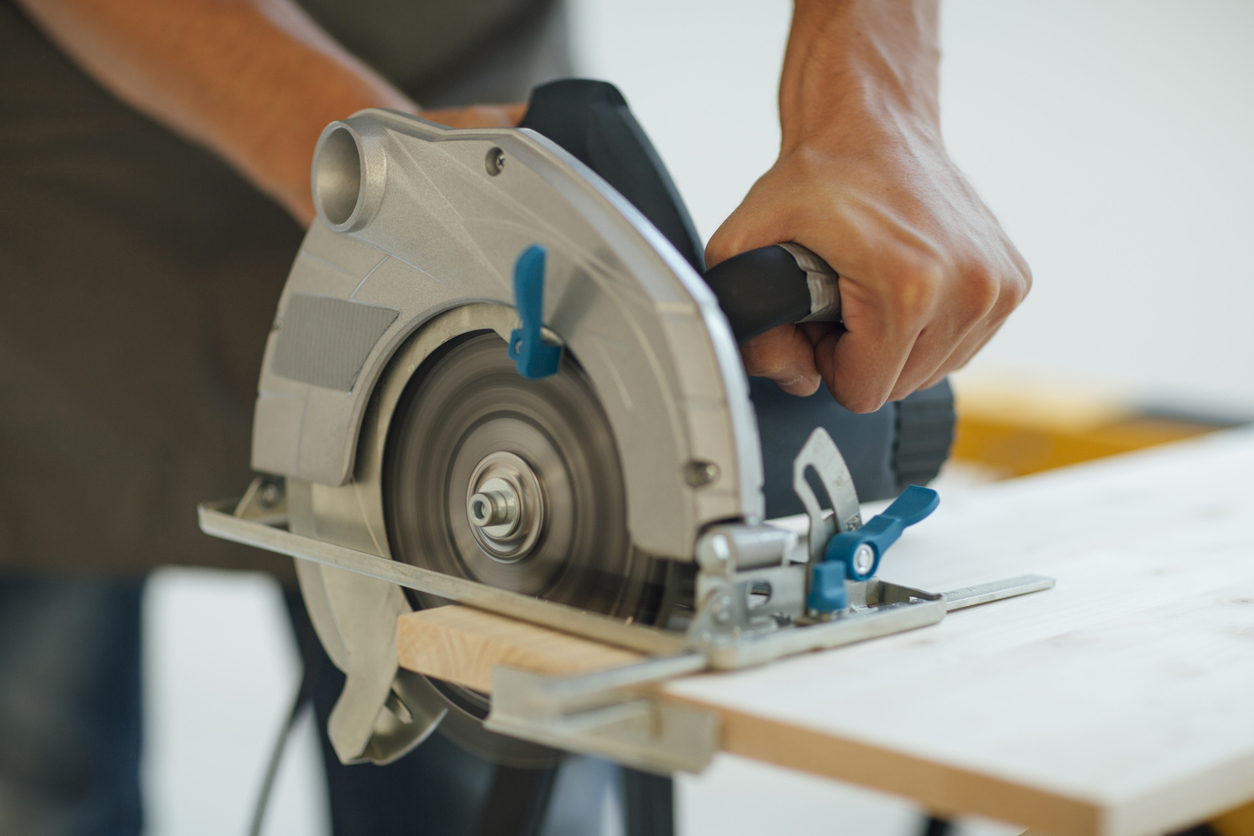
Around 40,000 people are admitted to the hospital every year with injuries sustained by circular saws according to National Consumers League’s reports. Whether you are a seasoned pro or a new-comer to the construction business, regularly reviewing the way you use equipment can help to reduce accidents. No matter your style of circular saw, the fact that they are used so close to the hands and body mean they pose a very real threat to you and your crew’s circular saw safety. Here are a few tips from OSHA to help you keep your construction site safe.
- Always wear eye protection when operating a circular saw. Wear a dust mask and ear protection if the situation calls for it.
- Avoid loose clothing, hair or jewelry that can be pulled into the saw.
- Stand to the side when cutting to avoid potential kickbacks. Don’t overextend—move your feet so that you are always balanced and in full control.
- Check the blade for sharpness—sharp blades work better and are safer. Check that the blade cutting nut has not been over-tightened. Only change blades when the saw is disconnected from the power source.
- Check the cutting surface for metal objects like nails or screws.
- Set the cutting depth as shallow as you can and don’t allow the blade to protrude more than a little below the stock being cut.
- While you can use a circular saw with just one hand, always use with both hands for maximum control. This also requires you to clamp down work pieces so that they don’t move while you are cutting them.
- Always check your circular saw before use to ensure that it is in perfect working order.
- When replacing your equipment, always consult the new manual. Power-tool manufacturers are continuously improving safety standards and these will only be effective if you and your crew are using them correctly.
- Some workers alter the lower guard by tying or wedging it open. Do not do this—rather leave the guard to pivot so that the blade is always safe.
- If your circular saw blade catches on thin-shave cuts or angled cuts, rotate and hold it open with an extended fingertip while still keeping both hands on the saw.
- Always wait for the blade to stop moving before setting the saw down on your work surface. Getting a circular saw with a blade brake will reduce your wait times.
